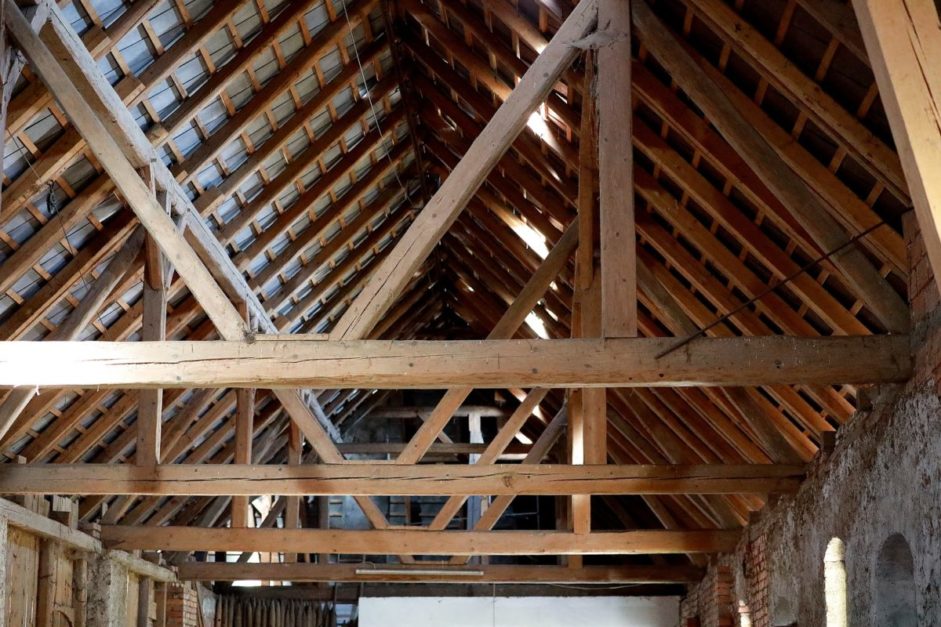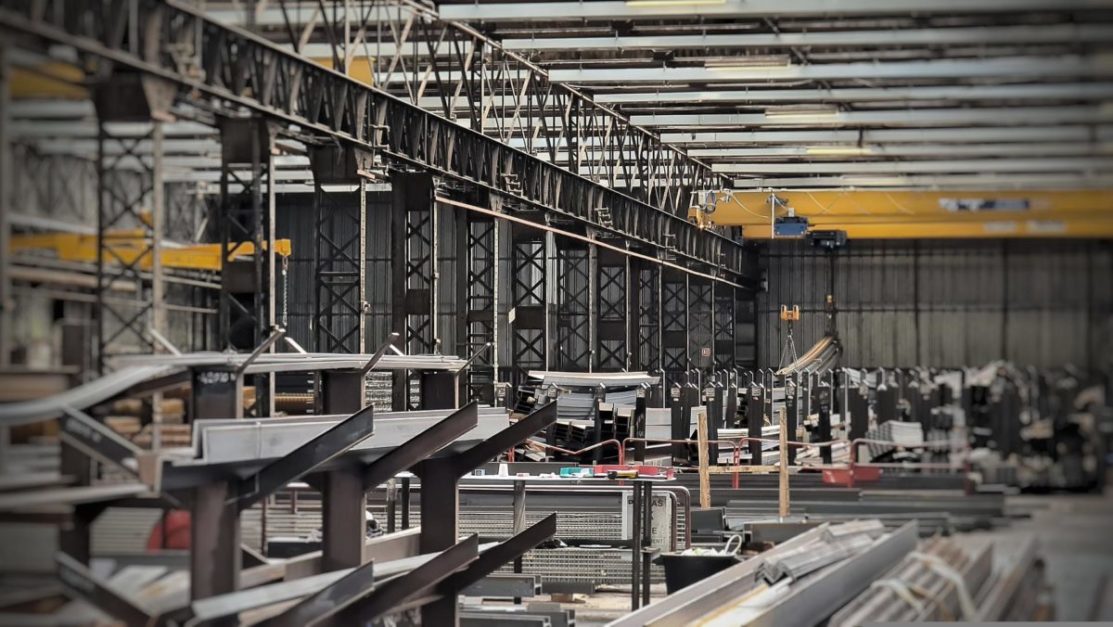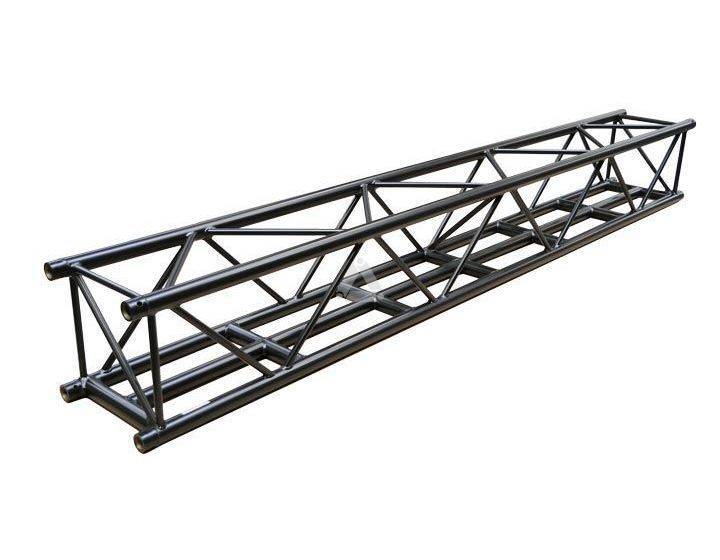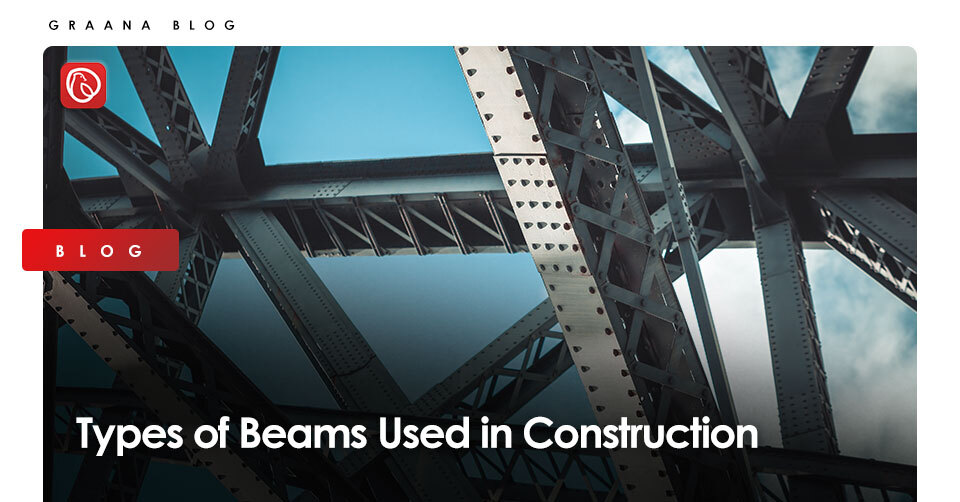Construction beams are an important part of the foundation of any building, and the way in which they are placed is critical to the overall stability of the finished product.
Graana.com, Pakistan’s smartest property portal, has compiled a list of different types of beams that can be used to create a solid foundation for your construction project, so that you can make an informed decision according to your needs and requirements.
What Is a Construction Beam?
Beams are structural elements that can withstand loads applied to their axis from different sides. They usually transfer loads exerted throughout their length to their terminals, which are then transferred to walls, columns, foundations, and other structures.
Beams could be:
- Supported (free to rotate, supported at both ends)
- Fixed (fixed to resist rotation, supported at both ends)
- Overhanging (overhanging reinforcement from one or both ends)
- Continuous (extending over more than two supports)
- Cantilevered (only one end is supported)
Different Types of Construction Beams
There are many different types of beams used in construction, each with its own unique set of characteristics and purposes. Some of the most common types of beams include the following:
- Timber Beam
- Steel Beam
- Universal Beam
- Trussed Beam
- Lattice Beam
- Composite Beam
- Chilled Beam
- Tie Beam
- Cantilever Beam
- Hip Beam
Timber Beam

Timber beams are one of the most common types of construction beams that have been used for centuries, primarily because of their strength and natural aesthetics.
They are also resistant to bending and twisting, making them perfect for use in large, open spaces.
Timber beams are also made up of natural materials that can add character to a building. They come in various shapes and sizes, and can be stained or painted for matching.
Moreover, timber beams are easier to build than other types of beams. Compared to other building materials, timber beams offer a greater thermal performance.
These beams, however, are prone to decay and infection if not regularly maintained. They’re also more flammable than other building materials. These types of beams are commonly used in the construction of houses, temporary bridges, and roofing.
Steel Beam

Steel beams can easily support enormous loads. They are used to create the frame of a building and play an essential role in the stability and strength of a structure. Just like timber beams, steel beams also come in various shapes and sizes, and can be custom-made to fit the needs of a specific project.
Steel beams are often used in high-rise buildings and other large structures. Steel is also a sustainable material and can be recycled when it is no longer needed.
Their dimensions and shapes determine their specifications. Steel beams are divided into I-beams, T-beams, channels, and broad flange sections based on their cross-sections, and they can be either straight or curved.
Furthermore, steel beams have various advantages over other types of beams. Unlike timber beams, rodents and termites cannot attack these beams, and they can endure high tensile loads (a maximum burden that a material can resist without breaking), resulting in greater structural robustness. They are also fire and corrosion-resistant.
Steel beams are primarily used in the construction of warehouses, housing frames, and roofing structures. They also protect homes from the effects of bad weather conditions.
Universal Beam
Universal beams are a type of steel beam that are widely used in construction. They are often used in place of traditional I-beams because they are easier to transport and install.
Universal Beams come in various shapes and sizes, and can be used for various purposes. They are typically made from carbon steel, although some manufacturers offer them in stainless steel or other alloys.
Moreover, universal beams have a significant moment of inertia, making them appropriate for bending and shear resistance.
Trussed Beam

Trussed beams are commonly used in roof construction, where they are used to support the weight of the roofing material. They are also used in floor construction, where they are used to support the weight of the flooring material and any furniture or appliances.
A bracing set stiffens this beam to form a truss and a bottom chord. Steel or timber components are used to construct a trussed beam.
Trussed beams can span anywhere from 10 to 100 metres depending on the structure. It is a cost-effective alternative for buildings with a height of more than 25 metres.
Another major benefit of these beams is the ease of production, making them a cost-effective option for wide-span designs.
Lattice Beam
Lattice beams are a type of beam that is widely used in the construction of bridges and other large structures. They are made up of a series of small square or rectangular steel members that are arranged in a crisscross pattern. This type of beam has a number of advantages over other types of beams, including a high strength-to-weight ratio and the ability to resist twisting.
Lattice beams are commonly used in bridges because they can span long distances without the need for support columns. They are also very powerful and can withstand large amounts of weight without buckling or bending.
These beams are usually made of iron or steel. In lattice beams, the upper chord acts in compression and sustains column loads without deformation. The lower chord is in tension and runs parallel to the beam’s support line.
Composite Beam
A composite beam is made up of two or more materials that have different physical properties. The most common type of composite beam is made from metal and concrete. Composite beams are used in construction because they are strong and lightweight.
Just like lattice beams, composite beams are also preferably used in bridges and other large structures. They are also used in buildings where weight is a concern, such as high-rise buildings and stadiums. Composite beams are solid and can support large amounts of weight without breaking.
Composite beams are more durable than beams constructed from their components, and they offer a good mix of materials in their construction. Other types of composite beams include those composed of plastic composites and timber.
When two materials are joined, their strength increases and their physical properties improve. For example, concrete provides bulk, rigidity, and compressive strength in steel-concrete beams, while steel minimises vibrations and deflections, and enhances compressive strength.
Shear connectors, which join the two materials, are one of the most important components of composite beams. They are embedded into steel beams and put into concrete slabs in steel-concrete composite beams.
Chilled Beam
Chilled beams are a type of heating and cooling system used in huge structures. These feature a network of pipes and heat exchangers connecting to the ceilings, which can either heat up or cool down a room. Depending on the mechanical system used, chilled beams might be active or passive. Chilled ceilings, on the other hand, use metal plates in the roof to transfer hot or cool air.
Chilled beams are low-cost and simple to maintain. They don’t make a lot of noise and don’t take up a lot of space to maintain. On the other hand, you can not use them in rooms with a floor-to-ceiling height greater than 2.4m. This is due to insufficient air circulation, making the system useless.
Tie Beam
Tie beams are horizontal beams that connect the tops of two vertical posts and transfer the weight of the roof onto them. They are usually made of timber and, in some cases, metal or concrete.
The main purpose of a tie beam is to provide lateral support to a roof. Tie beams are a critical part of any roof, and they play an important role in its overall stability.
Tie beams also have a decorative function; they can be used to create patterns or designs.
When installing tie beams, it is important to make sure that they are properly attached to the roof trusses and are level.
One common problem with tie beams is that they can sag over time. This can be caused by a variety of factors, including improper installation, excessive weight, or damage from weathering. If you notice that your tie beam is sagging, it is important to take action immediately to prevent further damage to the roof.
Tie beams also serve as strap beams to eliminate column eccentricity in foundation footings. They also prevent highly stressed columns from buckling outwards. Tie beams are also used to keep longitudinal bars in place while concrete is being poured.
Cantilever Beam
A cantilever beam is one of the types of beams is a stiff horizontal beam that is only supported on one end. A conventional beam, slab, or truss can be used as a cantilever beam. These beams are used in towers, bridges, and buildings when there is a necessity for an overhang. Temporary cantilever beams are commonly used as support in construction, particularly during the building of bridges. For stability, cantilever beams rely substantially on torque and rotational equilibrium.
Hip Beam
Hip beams are often used in roofing designs for residential buildings.
They are typically made of wood, steel, or concrete. They transfer the weight of the building to the foundation and help keep it upright.
Wooden hip beams are often used in older buildings. They are strong and durable but can be susceptible to fire and rot. Steel hip beams are less likely to be damaged by fire or rot, but they can be more expensive. Concrete hip beams are the most affordable option, but they may not be as strong as wood or steel.
To read more about steps of construction house, visit our blog.




